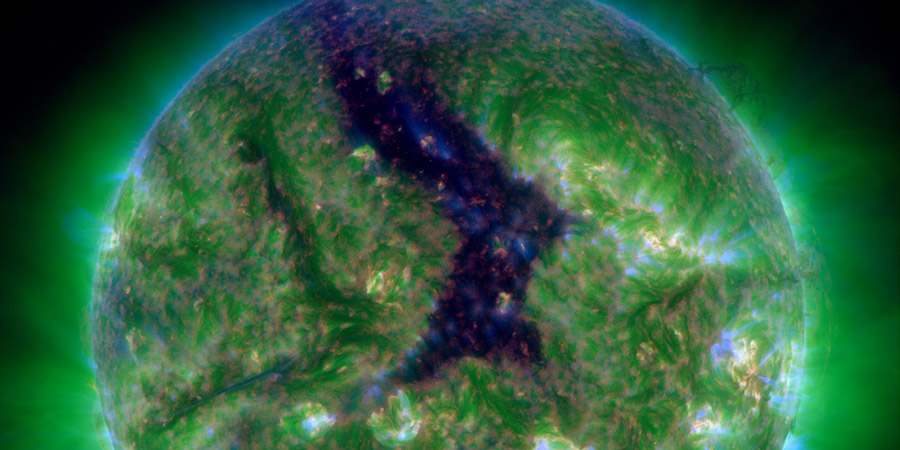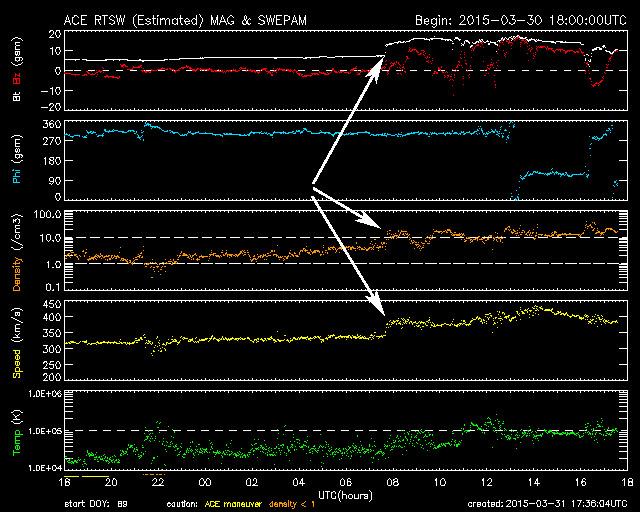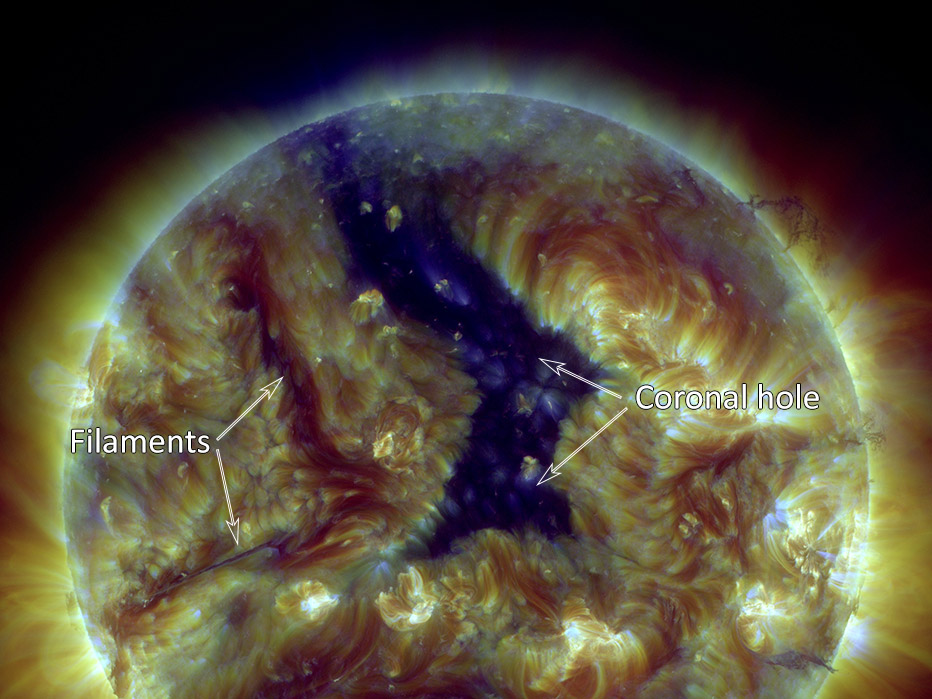Coronal hole, weak shock passage, filaments
Tuesday, 31 March 2015 18:06 UTC

Periods of minor G1 geomagnetic storming conditions were expected this weekend because a northward extension of the southern polar coronal hole was facing Earth. Enhanced solar wind flowing from this coronal hole was expected to influence Earth the past few days but it is clear now that this anticipated solar wind stream never arrived at Earth. Geomagnetic conditions have thus been relatively calm this weekend, far away from any kind of geomagnetic storm. This changed however this morning as a weak shock passage arrived at Earth.
Weak shock passage
An unknown shock passage of what could be an undetected coronal mass ejection was observed at ACE around 7:40 UTC this morning. Geomagnetic storming has not been observed and if we consider the current solar wind and IMF conditions, it is also unlikely that we will see a geomagnetic storm in the hours ahead. The solar wind speed is below the 400 km/s, just shy of background speeds but it is worth noting that the strength of the IMF (Bt) remains above average. Enhanced auroral displays are still possible in the hours ahead at high latitude locations.

Image: The signature of a clear shock passage around 7:40 UTC seen here on data from ACE.
Coronal hole facing Earth
We thus didn't see much from the southern polar coronal hole but another coronal hole is facing Earth and this northern hemisphere coronal hole has a transequatorial portion meaning it is more than likely that we will see an enhanced solar wind stream at Earth from this coronal hole. The solar wind stream could arrive as early as Thursday.

Image: Composite image by NASA SDO showing the dark coronal hole and two filaments on the Sun.
Something else that is well worth keeping an eye on are two filament channels that are trailing this coronal hole. Should one of these filaments become unstable and erupt, it is very much possible that the resulting coronal mass ejection has an Earth-directed component. Something to keep an eye on in the days ahead!
Thank you for reading this article! Did you have any trouble with the technical terms used in this article? Our help section is the place to be where you can find in-depth articles, a FAQ and a list with common abbreviations. Still puzzled? Just post on our forum where we will help you the best we can!
Latest news
Latest forum messages
Support SpaceWeatherLive.com!
A lot of people come to SpaceWeatherLive to follow the Sun's activity or if there is aurora to be seen, but with more traffic comes higher server costs. Consider a donation if you enjoy SpaceWeatherLive so we can keep the website online!

Space weather facts
| Last X-flare | 2024/03/28 | X1.1 |
| Last M-flare | 2024/04/25 | M1.3 |
| Last geomagnetic storm | 2024/04/19 | Kp7 (G3) |
| Spotless days | |
|---|---|
| Last spotless day | 2022/06/08 |
| Monthly mean Sunspot Number | |
|---|---|
| March 2024 | 104.9 -19.8 |
| Last 30 days | 135.5 +27.6 |


